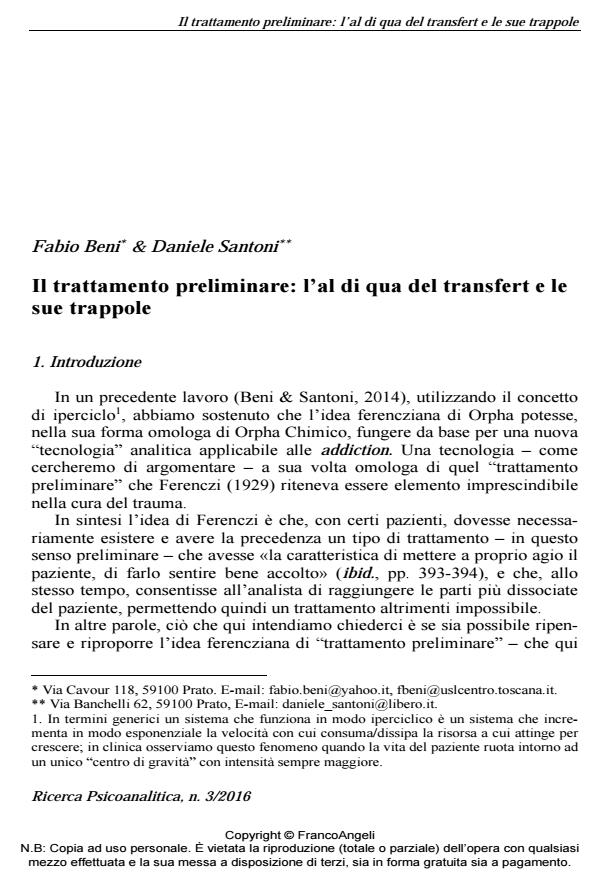The comforting preparatory treatment: on this side of transference
Journal title RICERCA PSICOANALITICA
Author/s Fabio Beni, Daniele Santoni
Publishing Year 2016 Issue 2016/3
Language Italian Pages 11 P. 107-117 File size 162 KB
DOI 10.3280/RPR2016-003008
DOI is like a bar code for intellectual property: to have more infomation
click here
Below, you can see the article first page
If you want to buy this article in PDF format, you can do it, following the instructions to buy download credits

FrancoAngeli is member of Publishers International Linking Association, Inc (PILA), a not-for-profit association which run the CrossRef service enabling links to and from online scholarly content.
In this paper the authors try to illustrate the ferenczian’s idea of comforting preparatory treatment at the light of the concept of hypercycle. In this way it’s possible to shift the focus of therapeutic action at the very first phases of the meeting with the patient; sometimes these clinical happenings could be critical in order to face psychopathological actions of the patient, frequently fast and non-negotiable. The authors believe that, in these cases, it’s capital to avoid these traps (called orphic-hypercyclic) in order to guarantee both the development and the beginning of the psychoanalytic process.
Keywords: Comforting preparatory treatment, orpha, Ferenczi, transfert, hypercycle
Fabio Beni, Daniele Santoni, Il trattamento preliminare: l’al di qua del transfert e le sue trappole in "RICERCA PSICOANALITICA" 3/2016, pp 107-117, DOI: 10.3280/RPR2016-003008